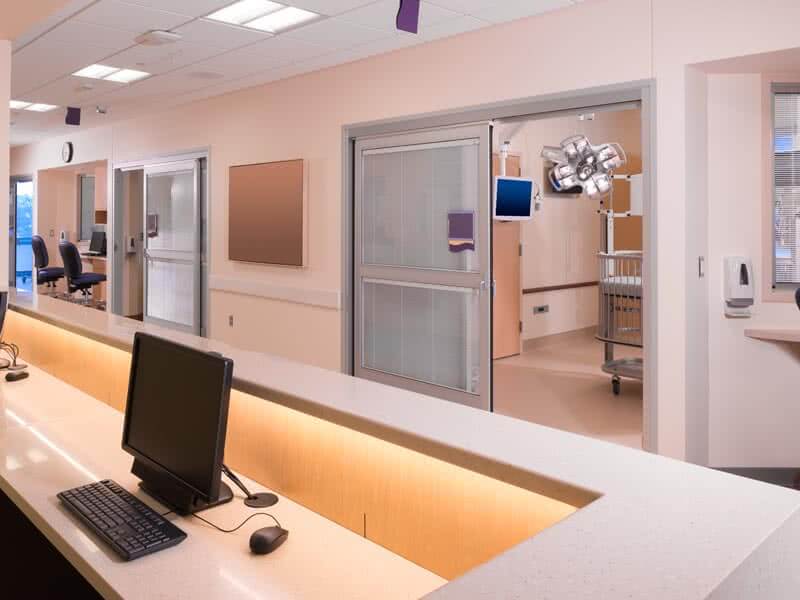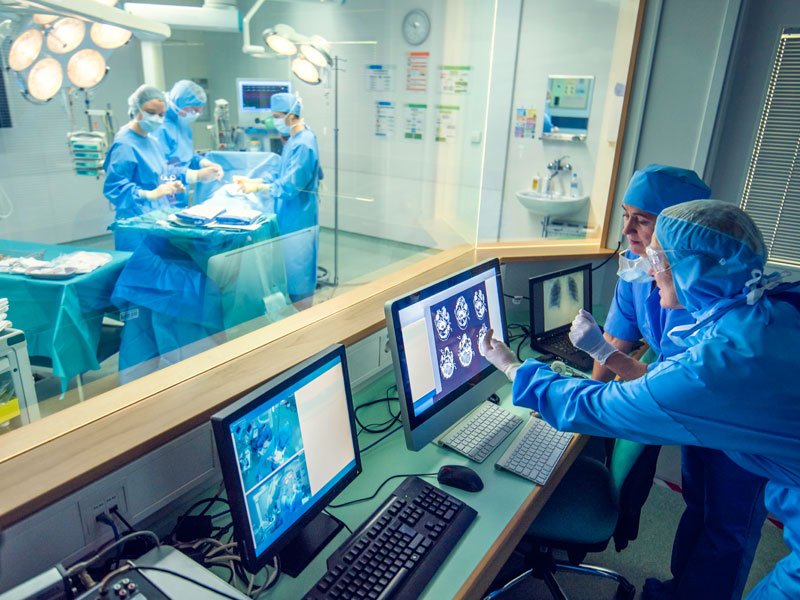Question: How can healthcare providers use technology to improve remote patient care?
Healthcare organizations are using telemedicine, wearables, mobile applications, sensor-tagged medication, and other tools to improve patient care and compliance. Healthcare providers need to ensure these critical services have continuous connectivity and high availability to deliver the highest level of care and involve patients more fully in their health journey.
In addition, healthcare providers must be able to access, store and process sensitive patient data with the highest level of security to meet industry and organization compliance requirements. Due to mergers, acquisitions, and the proliferation of healthcare systems, many hospitals and healthcare facilities struggle with stretched or outdated IT. Plus, remote facilities, such as physicians’ offices and retail clinics, often lack the infrastructure needed to support video calls and other telemedicine applications.
As a result, healthcare providers want to rapidly evolve IT capabilities to support telehealth application growth, while also ensuring network reliability, security, and regulatory compliance.
Edge computing localizes data processing and storage, enabling healthcare providers to deliver connected applications and generate near-real-time analytics while meeting regulatory requirements. However, these sites will need to be carefully monitored, managed, and scaled to ensure health care providers are able to deliver quality care to their patients.
Healthcare Provider IT Challenges
To support telemedicine growth, healthcare facilities have a number of challenges to overcome:
- Availability and thermal management: Healthcare IT teams must ensure network uptime, as well as uninterrupted connectivity across distributed sites. In addition, they must improve thermal management of small IT spaces, such as network closets. While climate-controlled, they experience temperature, humidity, and air quality control issues, which could put IT equipment at risk for damage from uncontrolled heat, dust or moisture.
Edge sites, such as IT closets, typically feature smaller, single-phase uninterruptible power supply (UPS) systems powered by valve-regulated lead-acid (VRLA) batteries. However, as telehealth applications grow, IT staff may consider adopting three-phase UPS systems for larger loads or lithium-ion batteries, which are significantly smaller and reduce total cost of ownership by virtually eliminating maintenance and increasing the time between replacement. IT teams will also need to consider implementing dedicated IT cooling, as more equipment gets deployed into tight spaces that were not originally designed for the higher-density applications used to drive IT performance. - Security: Healthcare IT teams are mindful that new applications must abide by consumer privacy regulations. The decentralization of healthcare networks and the explosion of telehealth have dramatically increased network endpoints and potential access points for bad actors. As a result, providers must rapidly improve network security to prevent devastating data breaches.
Serial console servers and secure gateways can isolate systems to prevent extensive network access from any single point of entry. They also enable secure, real-time monitoring, access, and control of IT systems, helping to strengthen IT networks and prevent data breaches. - Scalability: Growing telehealth usage has increased capacity demands on distributed sites, which often aren’t up to the challenge. Given soaring demand, healthcare providers need fast solutions. Modular solutions can provide prepackaged IT capacity and infrastructure that can be deployed and configured quickly, meeting urgent demands or simply streamlining and scaling operations.
- Serviceability: Hospitals may have a dedicated, on-site IT team, but most distributed sites do not. Maintaining availability and connectivity for telehealth and other connected services is critical, so embedded intelligence across systems enables IT teams to detect and resolve many issues remotely, reducing the need to perform site visits to resolve all IT issues.
How Vertiv Reference Designs Solve IT Challenges for Healthcare Providers
Healthcare providers need a ready-to-implement centralized infrastructure that ensures high availability for new applications and one that provides integrated power and cooling. New technology is often placed in converted closets or general access areas. As a result, integrated thermal management is essential, protecting IT systems from environmental risks that could harm performance and shorten equipment lifespans.
Vertiv has harnessed expert guidance based on years of industry knowledge to develop complete infrastructure designs to support healthcare technology requirements. Reference designs address common challenges associated with deploying technology in commercial and small office environments and can be adapted to meet healthcare providers’ specific needs.
Vertiv Reference Design #14 is a complete IT infrastructure solution addressing many of the challenges associated with supporting telehealth applications. The integrated rack solution can be deployed in areas that are temperature controlled for human comfort and are not typically protected by access control such as converted closets or exam rooms.
The recommended solution includes a rack and an uninterruptible power supply (UPS) providing battery backup in the event of power loss. Reference Design #14 includes an external battery cabinet that provides an extra layer of protection by adding runtime, which safeguards health data during an extended power outage. The solution also includes an intelligent power distribution unit for remote power management. Healthcare teams gain peace of mind knowing that unresponsive equipment can be rebooted off site without requiring an expensive on-site visit from service technicians.
In addition, Reference Design #14 includes a serial console system, enabling secure out-of-band visibility and control. IT teams can use the serial console to access equipment even when healthcare networks are down, ensuring continuity of services and speeding up issue resolution. Next, the solution provides recommendations for optional cooling in case the on-site heating, ventilation, and air conditioning (HVAC) system isn’t able to keep up with the heat generated by the IT equipment. Finally, maintenance and installation services are available to add an extra level of protection and enhance operations on site.
Healthcare provider IT teams can use Reference Design #14 as a starting point for configuring an ideal IT infrastructure, adding or swapping out the hardware, accessories, software, and services they want to solve their unique challenges.
Conclusion
Telehealth and other applications are gaining in popularity and may soon become the new normal. Vertiv Reference Designs can help healthcare providers meet marketplace demand and rapidly evolve supporting infrastructure to provide the reliable performance and high availability that connected services require. By doing so, providers can deliver a better experience, while tapping greater service delivery capabilities to serve more patients and increase their organizations’ profitability.
Learn more about Vertiv Reference Designs.






